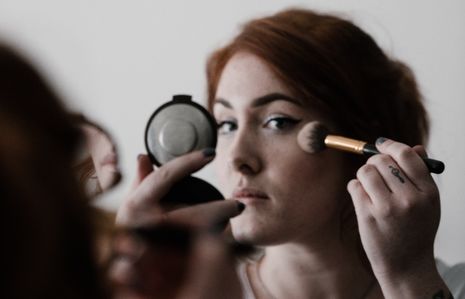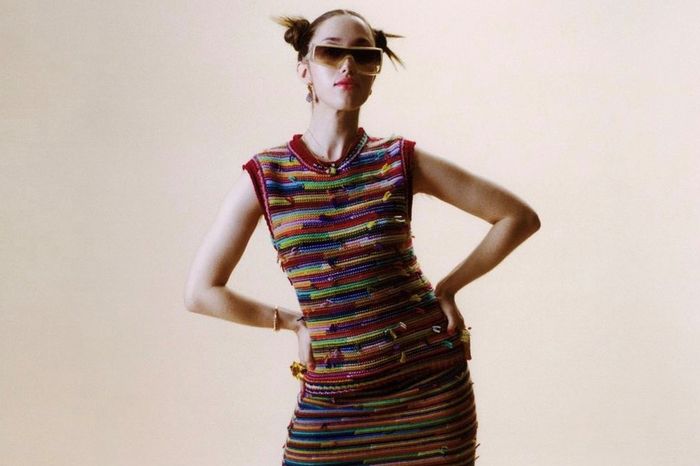YouTube: The mother of the ‘Fashion Influencer’
Jennifer Cartwright unpacks the beginnings of influencer marketing in the girl-next-door’s bedroom on YouTube

The girl-next-door makes YouTube videos talking about the different trends she likes. She gradually gains a following of fans who feel they are just like her. Her relatability gifts her an influencing power that can generate a consumer interest far greater than a TV advertisement or a runway show. The Primark haul filmed in her bedroom fans the flames of mass consumerism as viewers try and keep up. This is the birth of the influencer.
“What happens when the girl-next-door gets rich?”
To define what an influencer is now, they are someone who uses their social media platforms to endorse products for profit. A dream career or not even a proper job? Either way, the impact that digital influencing culture has had on the fashion industry is undeniable. In the early 2010s, this phenomenon of influence was only just beginning.
Before ‘Love Island’ became a pathway to gaining a million followers on Instagram ,and before models could be scouted through the simplicity of a TikTok dance, YouTube was the epicentre of fashion influence. On the video-sharing platform, many built social media marketing careers without even being aware they were doing it. The algorithmic trends of 2012, 2013, and 2014 saw YouTube favour sit-down, low-budget and talkative videos; it became a ripe platform for invisible influencing. Zoella was a touchstone of fashion YouTube culture. She filmed shopping hauls and makeup & hair tutorials alongside vlogs, challenge videos, and Q&As. What she advertised was not so much fashion but rather her everyday life with her friendships, relationship, and her home all forming part of her brand. Zoella’s content was styled as a light-hearted chat with a friend, the only difference being that as her subscriber count rose, this conversation was with millions of people at one time.
In contrast with the polished aesthetic of the mainstream fashion industry — magazine covers photoshopped to perfection —YouTube fashion influencers were popular if they maintained mistakes, laughing, stammering, and clumsiness in their final video cuts. The USP of the YouTuber was their relatability. YouTubers became the bridge between fashion brands, both high-street and high-end. Possible young consumers, desperate to be just like their favourite creator bought into a belief that if they bought that MAC lipstick or those Real Techniques makeup brushes, they could be. A ‘What I Got for Christmas!’ video could invigorate teens to start writing a new list on Boxing Day, littered with a series of trendy materialisms presented as attainable musthaves: the Fjallraven Kanken backpack, the Instax Mini Camera, the Adidas Superstars. Brands got smart about this buying power and soon sponsorship and product placement found a natural place in the YouTube video. For creators, YouTube quickly transitioned from a small hobby to a side hustle, to a full-time job. Initially, the monetisation was great; they could invest in a tripod and a ring light, do bigger fashion hauls and travel more. The lifestyle was becoming more and more desirable but less and less relatable. A drastic increase in income created the risk of YouTube fashion influencers falling out of touch with their audiences. What happens when the girl-next-door gets rich?
“To lose your relatability does not mean you must lose your authenticity”
The evolution of Emma Chamberlain’s content exemplifies this dilemma. In 2018, at just 17-years-old herself, Emma inherited Zoella’s title and became YouTube’s new it-girl. In many ways, she was an anti-fashion YouTuber as her content mocked the price of Gucci and the absurdist outfits of New York Fashion Week. Between her and her audience was a shared feeling that high-fashion is unattainable. Yet, as she grew up and grew in success, she became part of this elusive culture. Instead of mocking high-fashion, Emma was wearing it. By 2021, she was invited by Vogue to do interviews at the Met Gala, dressed by Louis Vuitton of course. Emma’s success is applaudable but also highlights how influencer culture is one step away from celebrity. Once you hit celebrity status, can you still be a relatable influencer?
For YouTubers who rapidly gained success like Emma, their future content could either downplay their wealth and feign an economic relatability, or it could flex the fantasy — entertaining audiences by showing them the life they wish they had. In practice, Emma has found the in-between as recent videos including ‘fashion week with my dad’ and ‘soho, new york’ honestly depict her life as it is now but retain a certain subtlety and humbleness. She still sits and talks to the camera, just now maybe in a hotel room rather than her bedroom.
Emma’s content shows that to lose your relatability does not mean you must lose your authenticity. Authenticity is what YouTube fashion audiences latch onto now. For example, Patricia Bright has created a stable success on her YouTube channel with videos consistently achieving 100k+ views — as she speaks in her fashion videos like she is giving an honest, sometimes brutal Amazon review.
Patricia Bright is a rare example of someone who has remained committed to the platform, and her recent appearance on Steven Bartlett’s ‘Diary of a CEO’ podcast shows this is clearly working well for her. Emma and Zoe both have faded away from YouTube. They still post, but far less regularly, favouring pursuit of other both public and private ventures including business, modelling and even motherhood. The general trend of fading away from YouTube reflects how exhausting a career on the platform can be. After all, if it is your job to sell your personality in consistently new and fresh ways, to an audience constantly looking for the newest thing, burnout is an expected conclusion. As YouTube videos have been so intensely tied with personality, it is no wonder many former YouTubers have taken a step back.
The YouTube fashion influencer can be seen as something from the past. To look back is a nostalgic trip of when I was 13 and the first thing on my after school to-do list was to catch up on any upload I had missed. But though YouTube is less popular, eclipsed by other social platforms such as Instagram and TikTok, the fashion influence culture it pioneered still resonates. Some YouTubers still upload, some brands such as VOGUE have created channels imitating the YouTuber’s casual content. And no matter what platform you are influencing on, the presentation of personality is still key.
 News / CUP announces funding scheme for under-represented academics19 December 2025
News / CUP announces funding scheme for under-represented academics19 December 2025 News / SU reluctantly registers controversial women’s soc18 December 2025
News / SU reluctantly registers controversial women’s soc18 December 2025 News / Cambridge welcomes UK rejoining the Erasmus scheme20 December 2025
News / Cambridge welcomes UK rejoining the Erasmus scheme20 December 2025 Features / Should I stay or should I go? Cambridge students and alumni reflect on how their memories stay with them15 December 2025
Features / Should I stay or should I go? Cambridge students and alumni reflect on how their memories stay with them15 December 2025 Film & TV / Timothée Chalamet and the era-fication of film marketing21 December 2025
Film & TV / Timothée Chalamet and the era-fication of film marketing21 December 2025










